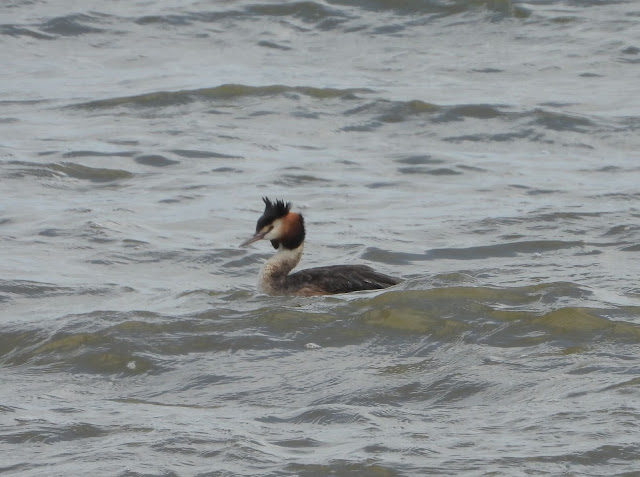A continuing small arrival of migrants, although the highlight were actually departures, with two Spoonbill south mid morning presumably the birds present at the north end of the estuary for several weeks.
The low high tide saw, with the notable exception of at least 66 Whimbrel, few waders in the estuary with just eight Bar and a Black-tailed Godwit, seven Ringed Plover and a Greenshank on the exposed mudflats, with a Common Sandpiper with three Turnstone at Langstone Rock.
Elsewhere the first Common Tern of the year was offshore with 115 Black-headed Gull, eight Sandwich Tern, eight Eider, seven Common Scoter, four Red-throated and three Great Northern Diver. The only other obvious migrants were two Wheatear on site and single Sand Martin and Swallow overhead.
Year list additions:
138. Spoonbill
138. Spoonbill
137. Common Tern
136. Common Sandpiper
136. Common Sandpiper
Other Wildlife: An increasing selection of insects alongside the greening and flowering of scrubby areas. New emergences for the year included a Dark-edged Bee-fly Bombylius major, Green Furrow Bee Lasioglossum morio, Nettle-tap Anthophila fabriciana moth and a nettle weevil Nedyus quadrimaculatus. Also on nettles, a new dung fly for the Recording Area, a Many-bristled Timothy Fly Cleigastra fasciata.
 |
| Dark-edged Bee-fly Bombylius major - Alan Keatley |
%20220425.JPG) |
| Green Furrow Bee Lasioglossum morio - Alan Keatley |
%20220425.JPG) |
| Many-bristled Timothy Fly Cleigastra fasciata - Alan Keatley |
Also on the wing the hoverfly Stripe-backed Fleckwing Dasysyrphus albostriatus and a Common Buff Snailkiller Tetanocera ferruginea.
Beetles were represented by the ground beetle Common Heart-shield Nebris brevicollis, the pea weevil Sitona lineatus and the seed beetle Oulema melanopus s.l., the latter both surprisingly found on the seawall lifeguard post.

%20220425.JPG)

%20220425.JPG)

No comments:
Post a Comment